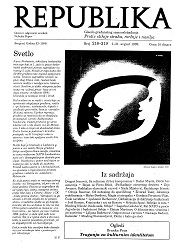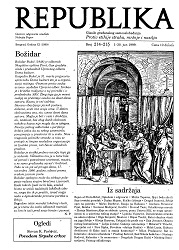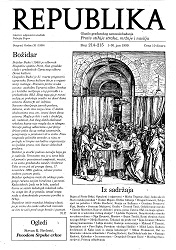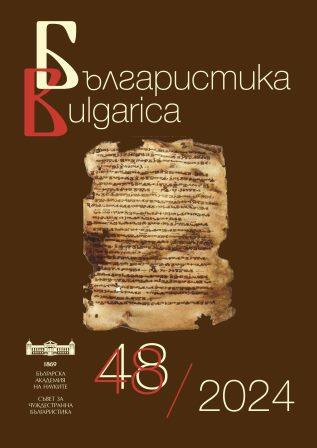
We kindly inform you that, as long as the subject affiliation of our 300.000+ articles is in progress, you might get unsufficient or no results on your third level or second level search. In this case, please broaden your search criteria.




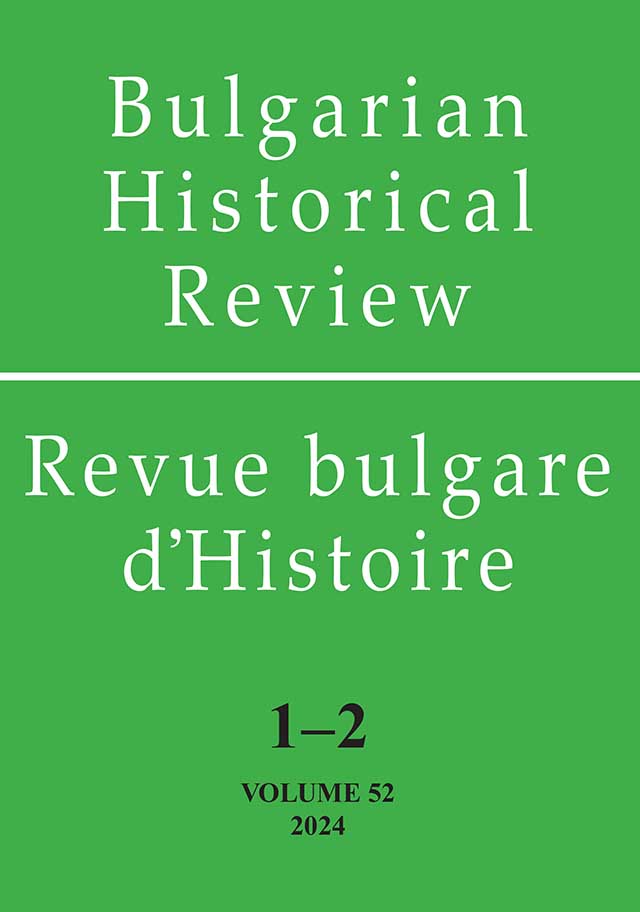
The research examines the development of the school military education system for reserve officers in the Bulgarian Armed Forces after the end of the Second World War until the end of the 20th century. The article is based on the collection, study, analysis, summarization and derivation of trends on the issue on foundation on the research of the historical material, find in the histories of military academies and schools in the country, supported by several archival sources and reports on the topic. The progress of the development process of mass armies throughout the world has been accompanied by the rapid expansion of the system of training officers for the active forces and those for the reserve component. Numerous military academies and training schools are opened, and the preparation from a centralized type is transformed into a decentralized one. The subsequent consolidation of the military academies and schools leads to a return to the leading role of the Reserve Officer Schools in the training of officers for the reserve. Later, a separate military unit is created, which is responsible for their teaching. Uniform and generally valid rules for all institutions preparing such personnel enter into force.
More...
Interview with Jan KREMER by Adam Kysler
More...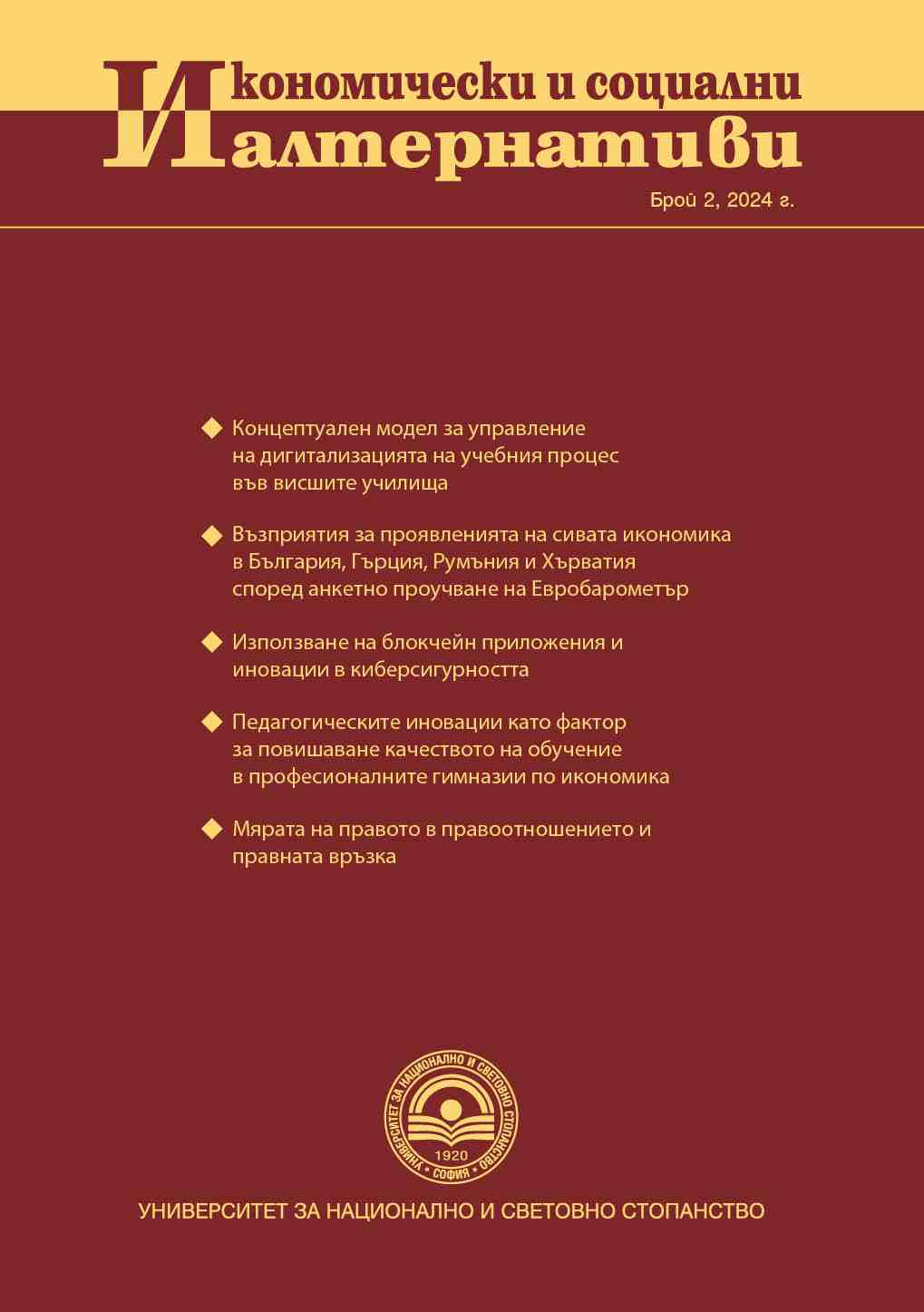
Shadow economy is a persistent and characteristic phenomenon of the economy of Eastern Europe. The article aims to study the shadow sector in several countries – Bulgaria, Greece, Romania and Croatia, presenting unpublished data on its perceived manifestations from the point of view of demand and supply. The data used is from a Eurobarometer survey conducted in 2019. The information provided is up-to-date and relevant to the study of shadow economy, due to the relatively constant behavior of economic agents and the lack of analogous recent survey that examines informal activity in such details, allowing comparative analysis with other European countries. The declared behavior of the respondents is examined and statistical tests are employed to indicate statistically significant differences between the mean values of the four countries regarding the performed paid undeclared activities and the purchase of goods from the shadow sector. The research specifies the sectors most affected by undeclared activities – in Bulgaria this is construction. The reasons for participation in the shadow economy from the supply and demand side are analyzed. The results reveal the pragmatism of Bulgarian respondents in comparison to the motivation of respondents in the other three countries. The most common paid undeclared activities are also indicated, as well as the most frequently purchased goods and services from the shadow sector. The material builds on the current knowledge on the subject and provides a starting point for the refinement of policies to combat shadow economy.
More...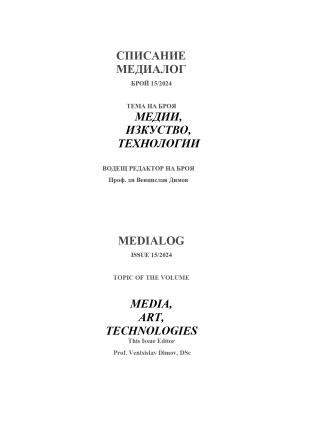
The study on the music recorded and reproduced on commercial media places in the framework of the research interest the early recordings of military bands in Bulgaria, recorded and published by the Gramophone Company in the first decades of the twentieth century. The emphasis is on the role of gramophones and gramophone records in Bulgaria as functioning objects (advertisements from periodicals from the first decade of the 20th century, literary works and memoirs are analyzed), symbols (labels are analyzed). Starting from the general picture, the study focuses on the place of the army and professional musicians in early Bulgarian gramophone records, shown as fields of cultural production and habitus. The ratios of genre arrays in early recordings are described and analyzed: "folk" music (folk, potpourri), military music (marches), popular music (Western dance idioms), art music, sound pictures. The relationship of contexts with contents has been sought, bringing out some encounters in military band recordings of Western and local, modern and traditional, political and popular.
More...
The proposed article examines the relationship between two institutions that normatively frame and manage sustainable practices of reproduction and modernization of folklore music in Bulgaria in the 21st century - a city festival for folk art and television media (and related digital platforms) that reflects it. The Folklore Sunrise Festival and Sunrise Music TV (Kiss M+) together create a vibrant "folk" scene that is socially and culturally significant, and attractive to communities connected to Bulgarian music-folk traditions.
More...
Presentation of the first joint exhibition by Orlin Spassov and Ventsislav Dimov "Dvoitsa" /"Both of us" (February 15 - March 20, 2024, Faculty of Journalism and Mass Communication) by the authors and photos of their works.
More...
Speech by Georgi Lozanov at the opening of the exhibition "Dvoitsa" on February 15, 2024.
More...
Ventsislav Dimov's interview with Orlin Spasov on the occasion of the exhibition “Both of us”(“Dvoitsa”). Spassov's answers show photography as a hobby and part of his professional interests.
More...
Orlin Spassov's interview with Ventsislav Dimov on the occasion of the “Both of us” (Dvoitsa”) exhibition. Dimov's answers present art as a child's play, as an escape from words, as a search for meaning through invention.
More...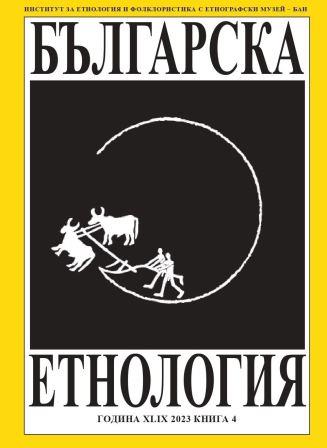
After the collapse of the Russian Empire at the end of the First World War and the accession of Bessarabia to the Kingdom of Romania, a large Bulgarian population found itself within the borders of this country. The census of the population in the Kingdom held on December 29, 1930 allows to trace certain aspects of the demographic development of the Bulgarians in Bessarabia. This article focuses on the quantitative growth of the Bulgarian population, the territorial distribution of Bulgarian communities and the level of urbanization of the Bulgarians.
More...
The article is dedicated to the resettlement of Bulgarians from Southern Bessarabia and Northwestern Bulgaria to Northern Azov (Northern Tavria) in 1861–1862 as an integral part of a broad multinational and multi-vector migration process in this region. The place of the Bulgarian element in the context of this complex migration process is outlined. A conclusion is made that as a result of this migration process a separate group of the Bulgarian Diaspora was formed – the so-called “Taurid Bulgarians”
More...
This text presents the women’s clothes of the Bulgarians in the settlements of Korten and Tvarditsa in Moldova in the period between the end of the 19th and the beginning of the 20th century. Two museum collections from the museums in the village of Korten and the town of Tvarditsa in Moldova are analyzed. In this study, the author seeks to answer the question of what did the Bulgarian women dress at that time and how did they do it. The reconstruction and interpretation of the data include the form, the structure and the terminology of clothing, as well as its constituent parts. The comparative-historical and systemic-structural analysis is applied, which allow to clearly reconstruct the idea of clothing of women from the Bulgarian settlements of Korten and Tvardica in Moldova on the boundary between the two centuries.Bulgarian women’s clothes in the settlements of Korten and Tvarditsa in Moldova
More...
In my previous announcements and publications, I have already paid attention to the expedition of the famous Bulgarian folklorist Rayna Katsarova in Dobrudza in the summer of 1944. The expedition is more deeply analysed in this article, the particular occasion being that after the finding of the file with the report by Rayna Katsarova about this travelling, I was happy to find her fieldwork records done in several living settings in Northeast Bulgaria: Balchik, Lyulyakovo, Dobrevo, etc. Their data is preserved in the Musical Folklore Archive of the Institute of Art Studies at the Bulgarian Academy of Sciences. A specific focus of Rayna Katsarova’s expedition in Dobrudza is the Bulgarian newcomers from Tavria (region which at that time was situated in the Ukrainian SSR), who bear specific vernacular, traditions and folklore. Our big folklorist did not know at the time being that just in several months they would leave their metropolis. In about 2000 Tavrian Bulgarians were deported back to the USSR. In their turn, the Tavrian Bulgarians in Dobrudza did not know that the meetings with a scholar like Rayna Katsarova were a unique chance to leave to the next generation a record of a small part of their cultural memory, rites and musical folklore as a document for the development of their culture and ethnic identity in the conditions of the Second World War.
More...